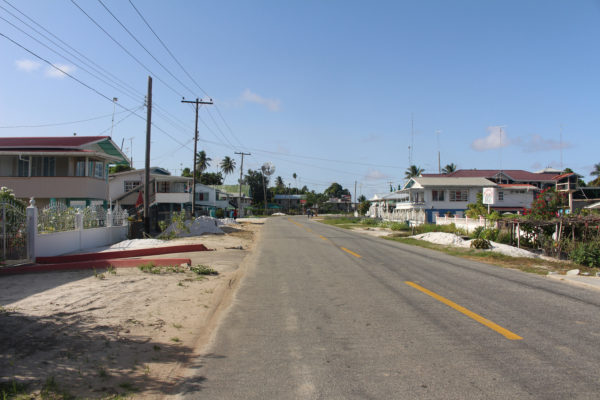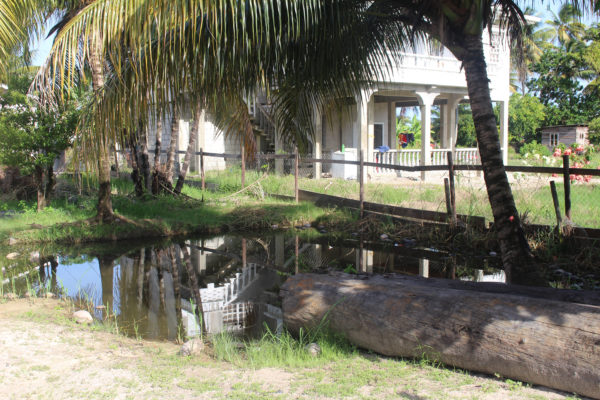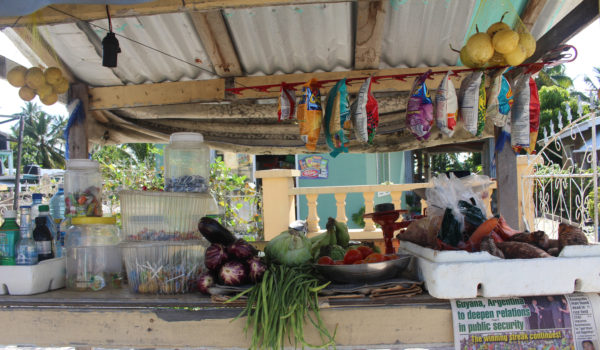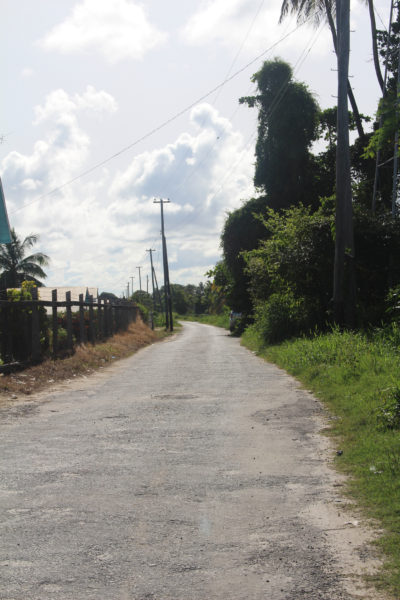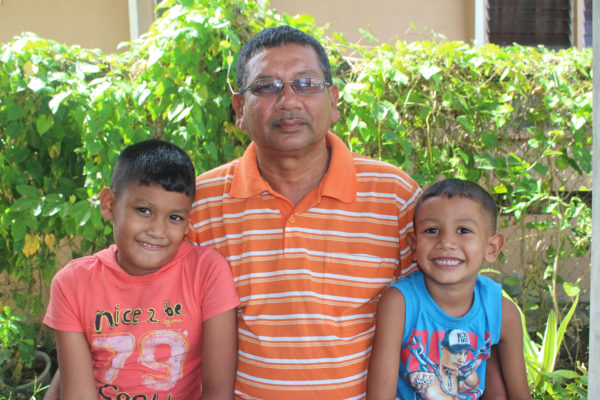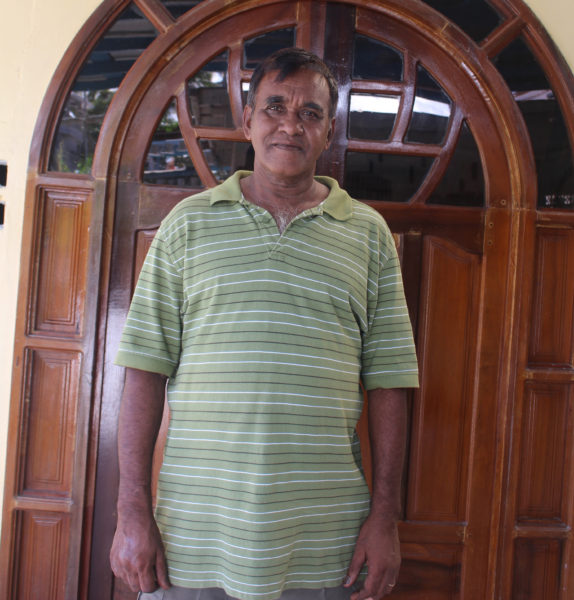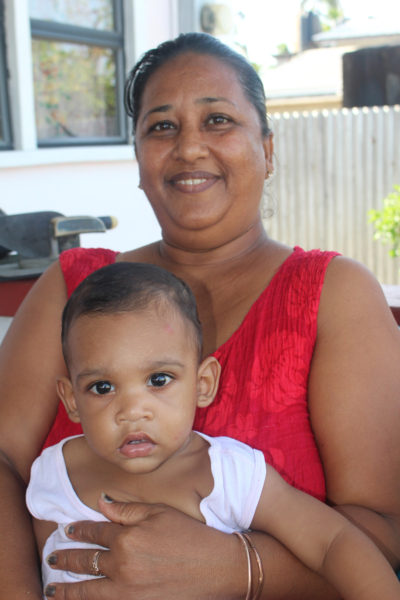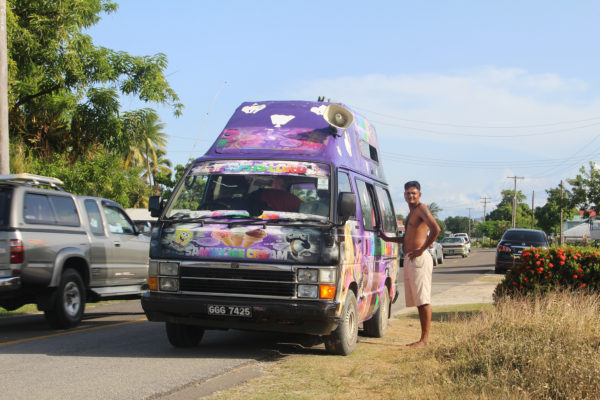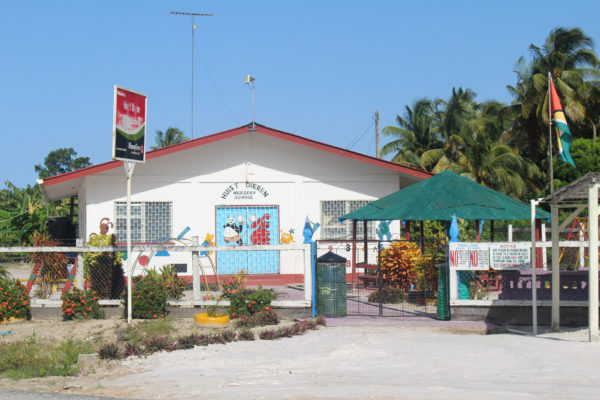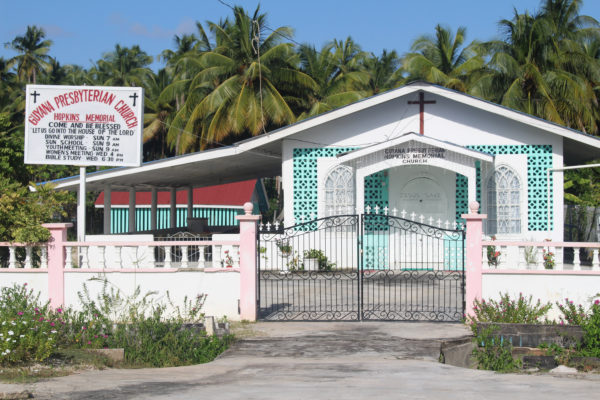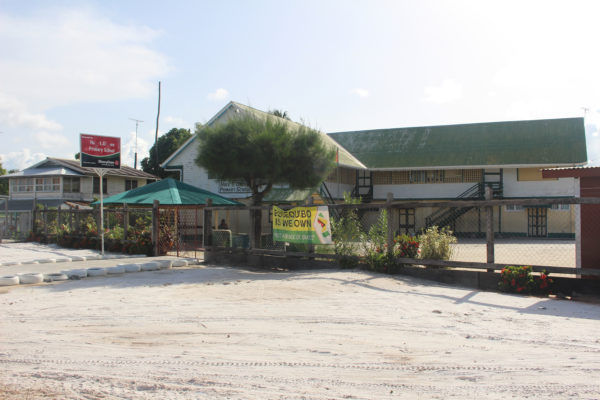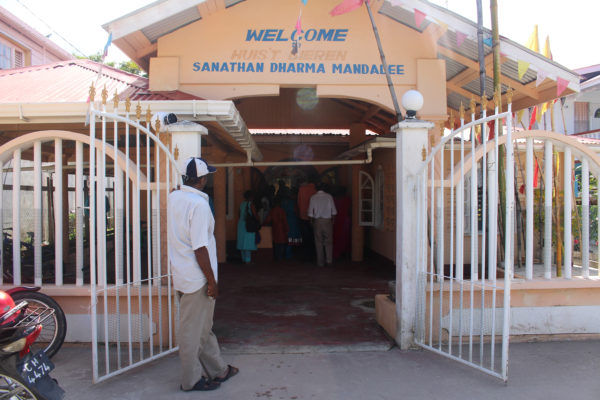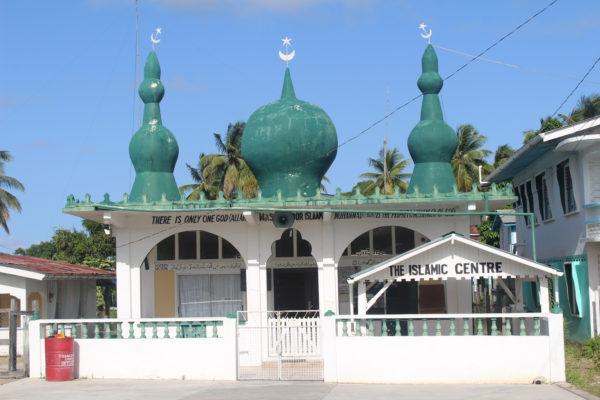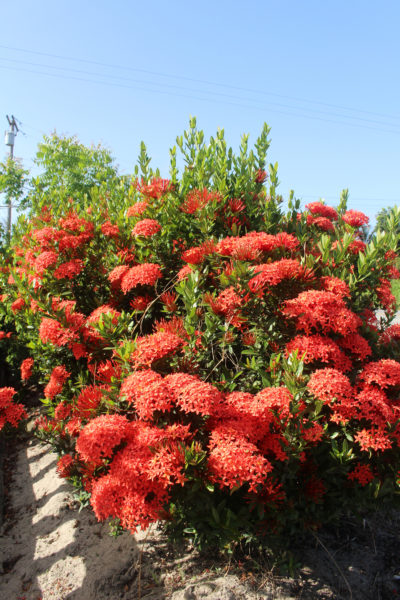Photos by Joanna Dhanraj
Just about 500 people live in Huis T’ Dieren, a bright and beautiful little village on the Esse-quibo Coast. The name Huis T’ Dieren is of Dutch origin and it means ‘House of Animals’.
Teachers, Pastors, a Pandit and an Imam are some of the prominent people to have hailed from Huis T’ Dieren but was also home to other renowned people like former attorney general Dr
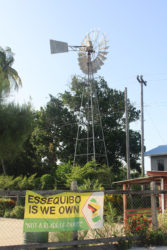
Mohamed Shahabuddeen, former minister Harripersaud Nokta and former first lady Deolatchmee Ramotar.
Driver and poultry farmer Richard Seecharran, a resident of Huis T’ Dieren, recalled that when he was much younger the houses were smaller, but there were many fruit trees and very few fences.
“Growing up as a boy we had a loam road with lots of holes. We used to use the water from a trench to bathe and wash and well the rain water was what we used for cooking and drinking. Years later they put stand pipes on the road for us to use. There was always a windmill at the pump station that used to always be spinning but it doesn’t work anymore,” Seecharran said.
As we spoke, a “greenie” or “luboo”, an odd green lizard paused behind us camouflaged nicely by the grass. Seecharran’s wife, Marcelle asked if the reporter had seen it anywhere else apart from the Essequibo Coast. The answer “no” came as no surprise to her, since a few persons had mentioned before that they hadn’t either. She then went on to explain that boys in the area usually catch them and sell them to other locals who sometimes export them.
“The area is nice. We have everything at our convenience,” Seecharran added.
The convenience he talks of includes the numerous shops in the village as well as potable water, electricity, grocery vans, horse carts selling meat and fish and Puran Brothers’ waste disposal service that removes the garbage once a week, not forgetting the schools, health centre and places of worship.
Asked about telephones, Seecharran said that within the last 12 years he and his wife have applied twice but it doesn’t really matter anymore since they make out just fine with their cellular phones. Besides, he said, a few of the persons who have landline phones complain often about problems with the telephone.
Flooding doesn’t occur unless there’s heavy rainfall and the water reaches just about ankle height but because there is proper drainage, it runs off rather quickly.
According to the resident, they’re well catered for and Huis T’ Dieren is really a nice place to live. “It’s a quiet area. The people are good; no problem. Everything is in walking distance,” he added.
Street lights and a recreational centre for the youths would be the cherry on top the icing on the cake for Seecharran and his family.
On leaving the cheery little family, the World Beyond Georgetown came upon a crowd of people celebrating with dance and songs as they entered the temple. It was later learnt that an overseas-based Guyanese had brought two almost life-sized Murtis (statues of Hindu deities) for the village’s little temple.
A short distance away lives shopkeeper and pastor of Cornerstone Deliverance Apostolic Church, Parmanan Persaud, who turns out to be a historian also.
“The word ‘Huis’ means house while ‘Dieren’ is plural for deer/animals. Huis T’ Dieren was once a sugar plantation,” Persaud said.
“All the trenches and canals were laid out by the Dutch. The road then was a red brick road. Today it’s asphalt or pitched. Huis T’ Dieren was an estate. The fields were all converted into rice. It was rumoured that the Dutch left after the boilers exploded. After then the people started to plant rice. The same trenches are used for drainage and irrigation today.”
Persaud added, “About fifty years ago people were living alongside the road and we could have known all the people. Now the village has become very much populated and people live in schemes and backyards.”
According to him, Huis T’ Dieren is populated mostly by Indian-Guyanese and its people are mostly Hindus since their fore parents would have come from India. After the missionaries built the Huis T’ Dieren Church of Scotland School, persons wishing to attain a job in the school’s administration were expected to be converted; thus Christianity began to spread. The village now has a Mandir and a Masjid and two Christian churches: the Cornerstone Church and the Presbyterian Church, rumoured to be over 100 years old.
“This place is a quiet place. We don’t have noise nuisance. The people are very friendly; they’re very cooperative too. Every person has land while some also have rice fields. They would cultivate their land to get produce for themselves and sell. Nearly every plot of land has coconut trees and a kitchen garden. Some people catch fish from the river behind the village. We plant mainly organic so our foods are healthier. Every day we can pick fresh greens and eat healthy,” he said.
The 64-year-old resident recalled, “In my early days we had no electricity. People used bottle lamps, lanterns while a few had gas lamps. I studied using a lantern. Today we have electricity.
During those days there was an overhead tank that was propelled by a windmill that extracted water and distributed to the pipes that used be along the public road. Because there were only a few pipes, in the mornings there was a rush for water. Today a pump station situated three miles away provides us with a regular supply of water though the water comes red sometimes.”
According to Persaud, the access road called Middle Walk Street, runs for a mile or so before reaching a conservancy dam called 11. From there persons take a boat for 2½ miles before arriving at an Amerindian settlement called Mashabo.
One disadvantage for the village Persaud believes is having to travel all the way to Anna Regina to conduct official business. Another would be the narrow road. He also sees room for more improvement concerning drainage and irrigation. Street lights, he said, will be of good benefit to the villagers.
Also, the construction has reduced so I’ve noticed that employment rate has dropped, he said.
“As a pastor, I enjoy seeing people come out of the Kingdom of darkness into God’s marvellous light. I’m contemplating on winning the people in this village for Christ so that we may all be with him when our time is expired from this earth,” he said.
The next person we came upon was wearily riding his bicycle along a sunbaked Essequibo Coast public road. But he said he was from Mashabo. Before continuing he invited the World Beyond Georgetown to visit his village sometime.
Along the way someone who requested to remain anonymous shared a concern. “Persons have children and not sending their children to school,” the villager said. “They collecting vouchers and not sending them to school. Some children are allowed to wander the road careless which can lead to accidents. Reports were made to the welfare a few times but the situation wasn’t looked into. It’d be nice if Child Care and Protection Agency would look into the matter and put some measures into place.”
Further up the road, a group of men sat at a liquor store drinking and chatting.
Nearby, Seeranie Sookdeo was sitting at home with her grandson, Nick. Sookdeo who has been living in Huis T’ Dieren for some 26 years, moved from the nearby village, Middlesex. She said she met really friendly and kind people when she moved.
“The place then wasn’t so populated. There were lots of fruit trees like mango, awara, genip and cashew. As the houses went up, the fruit trees got cut down,” she said.
“Most persons are restricted to farming. You get the carpenter and mason work too but in and out; so a disadvantage of living here is the low employment rate. Streetlights is another; the place is so dark when the night comes. We’d be happy for some.
“Apart from that the place is quiet. It’s nice to live here. Everything is close by which is a good thing.”
